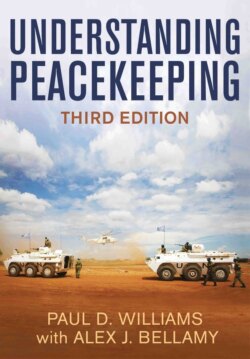Читать книгу Understanding Peacekeeping - Alex J. Bellamy - Страница 41
Conclusion
ОглавлениеThree central conclusions emerge from our investigation into who deploys peacekeepers. First, with their functional and normative advantages, international organizations are the most significant and legitimate peacekeepers, with the UN predominant among them. International organizations can construct norms that shape state behaviour and act as legitimizing bodies – conferring the stamp of international legitimacy on state practice. The UN in particular has played a central role in the creation of new norms in international society (Claude 1966; Weiss and Daws 2007). However, the ad hoc nature of UN peacekeeping made the organization and its members slow to recognize the implications of the expansion of its post-Cold War operations and the transition from a Westphalian towards a post-Westphalian international society. As Adam Roberts (1993: 4) noted in the early 1990s, the UN’s preoccupation with making its existing peacekeeping infrastructure more efficient detracted from the even more critical task of re-examining the premises underpinning the concepts and practices themselves. In the last decade or so, this has been reflected in another discernible shift towards ‘stabilization’ as a key concept for UN – but also other types of – peace operations. Second, the increasing demand for peacekeepers encouraged an expansion of both unilateral and multilateral peacekeeping activity outside the auspices of the UN. Third, the different types of peacekeepers have developed various partnerships to tackle the significant challenges confronting them. Certainly in Africa and Europe, partnership peacekeeping has become the norm rather than the exception.
